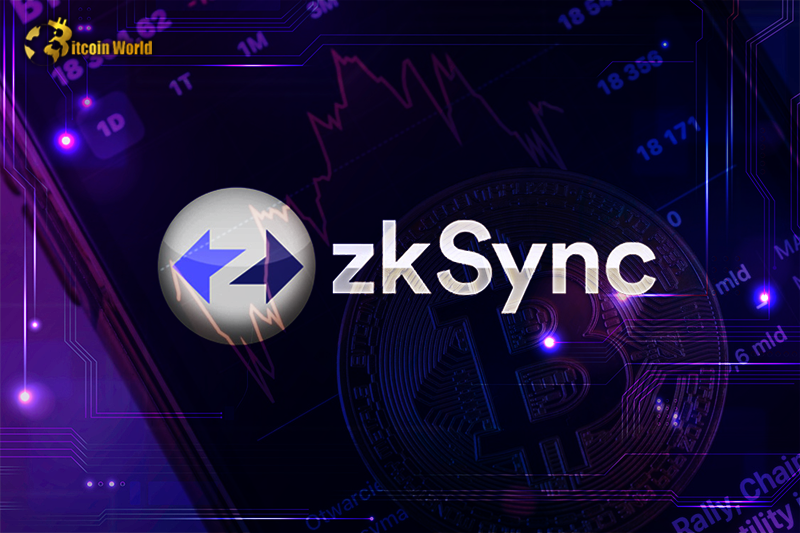The crypto world is known for its volatility, and it seems the developer landscape is no exception. Recent data reveals a significant shift: a 28% year-on-year decrease in monthly active developers across the crypto ecosystem as of October. That’s a considerable drop, raising eyebrows and sparking conversations across the industry. Reports are highlighting this exodus, but is it all doom and gloom? Let’s dive deeper and see what’s really happening.
The Big Picture: Developer Activity Dwindles
According to the latest developer report from Electric Capital, the overall number of monthly active developers has shrunk from 26,701 to 19,279. This 27.7% decline paints a picture of reduced engagement compared to the previous year. Major players like Ethereum, Polygon, and Solana haven’t been spared, experiencing substantial drops in their developer communities:
- Ethereum: -23%
- Polygon: -43%
- Solana: -57%
These numbers reflect a broader trend of developers stepping back, but before we jump to conclusions about a crypto winter for development, let’s look at the exceptions.
Against the Tide: Starknet and zkSync Buck the Trend
In a sea of red, two projects are showing green shoots: Starknet and zkSync. These Ethereum Layer-2 scaling solutions are not just weathering the storm; they’re actually seeing growth in their developer activity. While the increases are modest, they are significant considering the overall market downturn:
- Starknet: +3%
- zkSync: +6%
This begs the question: what makes Starknet and zkSync different? Why are developers gravitating towards these platforms even as others see a decline?
Decoding Starknet and zkSync’s Appeal
Both Starknet and zkSync are focused on solving one of Ethereum’s biggest challenges: scalability. They utilize zero-knowledge (ZK) rollups, a cutting-edge technology that allows for faster and cheaper transactions on Ethereum. Let’s break down what makes them stand out:
Starknet: The Quantum Leap in Scalability
Starknet, powered by StarkWare, has been making waves with its “Quantum Leap” initiative launched in July 2023. This upgrade is designed to dramatically increase Ethereum’s transaction processing speed (TPS). Imagine Ethereum handling transactions at speeds comparable to traditional payment processors – that’s the potential Starknet is unlocking.
- Enhanced TPS: Aiming for a consistent 37 TPS, with the potential to burst up to 90 TPS in certain scenarios.
- Zero-Knowledge Rollups: Leveraging ZK technology to bundle multiple transactions into a single, verifiable proof, reducing congestion on the main Ethereum chain.
- zkEVM Development: Actively developing a zero-knowledge Ethereum Virtual Machine (zkEVM) to further boost Ethereum’s capabilities.
zkSync: Building a Hyperchain Future
Matter Labs’ zkSync is taking a different but equally ambitious approach. They are focused on creating a network of “hyperchains” – an ecosystem of interconnected and customizable blockchains. This vision aims to build a highly scalable and interoperable future for Ethereum.
- Hyperchains: Developing a network of interoperable and sovereign chains built on zero-knowledge technology.
- Scalable Ecosystem: Creating a foundation for a vast ecosystem of applications and protocols to thrive.
- zkEVM Power: Also building zkEVM solutions to enhance Ethereum’s scalability and developer experience.
Beyond the Giants: Other Notable Mentions
While Starknet and zkSync are leading the charge against the developer downturn, other projects are also showing resilience. Chainlink, Stellar, Aztec Protocol, and Ripple have all managed to increase their developer counts. While their overall numbers might be smaller than Starknet and zkSync, their growth is a positive sign for the diversity and health of the crypto ecosystem.
The Developer Exodus: Newcomers vs. Veterans
To understand the developer decline better, it’s crucial to look at who is actually leaving. Enrique Herreros, a software engineer at Electric Capital, shed light on this in a thread on X (formerly Twitter). The data suggests a nuanced picture:
- Newcomers (less than one year): -58% decline. This group, often drawn in by bullish market hype, is the most sensitive to market downturns.
- Emerging Developers (one to two years): +11% increase. Developers with some experience are showing resilience and even growth.
- Established Developers (more than two years): +5% increase. Experienced developers are remaining committed to the space, indicating long-term faith in crypto’s potential.
This suggests that the developer decline is primarily driven by the exit of newcomers, a cyclical pattern often seen in the crypto market. Experienced developers, who are crucial for the long-term growth and stability of the ecosystem, are largely staying put and even expanding their presence.
Key Takeaways: What Does This Mean for Crypto?
The crypto developer landscape is undergoing a correction, but it’s not all negative. Here’s a summary of the key insights:
- Developer Activity is Down: Overall, monthly active developers have decreased by 28%.
- Layer-2 Solutions Thrive: Starknet and zkSync are exceptions, showing developer growth amidst the downturn.
- Experienced Developers Remain Committed: The decline is mainly among newcomers, while experienced developers are staying and growing.
- Focus on Scalability: Starknet and zkSync’s success highlights the importance of Layer-2 scaling solutions for Ethereum’s future.
- Cyclical Nature: Developer trends are influenced by market cycles, with newcomers being more reactive to price fluctuations.
Looking Ahead: A More Mature Ecosystem?
While a 28% developer decline sounds alarming, digging deeper reveals a more nuanced story. The crypto ecosystem might be maturing, shedding fair-weather developers and consolidating around projects with strong fundamentals and real-world solutions. The growth of Starknet and zkSync, especially in a challenging market, signals a focused interest in projects addressing core blockchain limitations like scalability. As the ecosystem evolves, attracting and retaining experienced developers will be paramount for sustained innovation and growth. The future of crypto development may be less about quantity and more about quality, with a core group of dedicated builders pushing the boundaries of what’s possible.
Disclaimer: The information provided is not trading advice, Bitcoinworld.co.in holds no liability for any investments made based on the information provided on this page. We strongly recommend independent research and/or consultation with a qualified professional before making any investment decisions.


